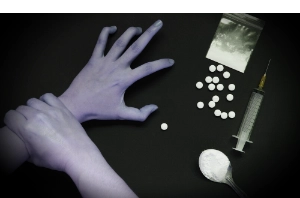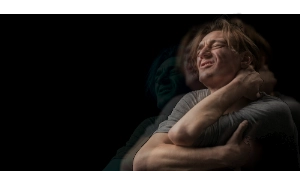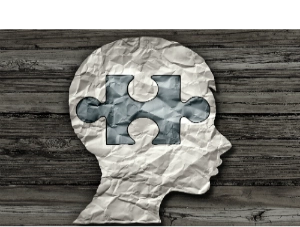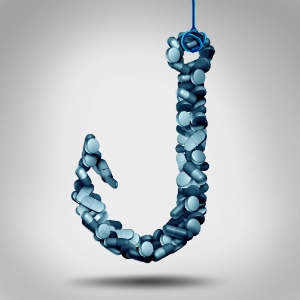An estimated 20.5 million American people reported having a substance use disorder during 2015. Out of the reported amount, more than 2.5 million were struggling with addiction to opiates and opioids.
Medical use of opiates and opioids is common for people in need of pain relief. There is a difference between opioids and opiates and it consists of how the drugs are made. Opiates are a chemical compound that is extracted from the natural plant called Poppy. While opioids are man-made in labs.
Some examples of opiates include:
- Opium
- Morphine
- Codeine
- Heroin
Opioids include:
- Hydrocodone (e.g. Vicodin)
- Oxycodone (e.g. Oxycontin, Percocet)
- Oxymorphone (e.g. Opana)
- Meperidine (e.g. Demerol)
- Methadone (e.g. Dolophine)
- Fentanyl (e.g. Ultiva, Sublimaze, Duragesic patch)

Treating addiction to opiates and opioids is one of the hardest addictions to treat. There are many factors which can impede addiction recovery. Here are a few of the reasons why treating an opiate addiction is so difficult.
Call for Drug Rehab 866-418-1070
Severe Opioid Withdrawal Symptoms
Addiction isn’t just in the mind, it’s also in the body. The more you use, the more your body becomes dependant on the chemical. This makes withdrawing from opiates and opioids a particularly harrowing affair.
Early symptoms of opiate and opioid withdrawal include:
- Agitation
- Anxiety
- Muscle aches
- Sweating
- Insomnia
- Runny Eyes
- A runny nose
- Yawning
These will progress to more severe symptoms such as:
- Abdominal cramping
- Diarrhea
- Dilated pupils
- Goosebumps
- Nausea
- Vomiting
The physical experience of withdrawal can be harrowing. Coupled with the overwhelming cravings, many patients fail their recovery at withdrawal.
This is why many addiction experts recommend medication-assisted treatment (MAT). MAT is the use of prescription medication to reduce withdrawal symptoms. It helps satiate the body’s physical dependence on opioids without the euphoric effects.
Withdrawal symptoms from opioids are some of the worst an addict can experience. 
Suboxone is one of the best medications available for combatting opioid withdrawal. It helps satiate cravings and physical withdrawal. It also negates the euphoric effect of any other opioids taken. Some studies clock Suboxone treatments at a 60% success rate.
Misunderstanding of What Opioid Addiction Is
For many opiate and opioid addicts, their addiction is a personal moral failing. Anti-stigma campaigning has done its best to combat this thinking. But there is still a lot of addicts that consider their addiction a sign of a weakness.
On the other end of the scale, many recovery groups push the “addiction as disease” narrative. Calling addiction a disease can be helpful in the fight against stigma. But it does come with some pitfalls.
New research is trending towards treating substance addiction as a learning disorder.
Maia Szalavitz is the author of “Unbroken Brain: A Revolutionary New Way of Understanding Addiction.”
Framing addiction in this way makes the condition more akin to developmental disorders than diseases. It can also open the door to more holistic treatments. Combining pharmaceutical aid, behavioral therapy, and help groups for a more successful treatment.
Unrealistic Expectations
In part, this point is an extension of the last. Many people with an addiction to opiates and opioids have unrealistic expectations of what recovery will mean for them.
For example, many addicts treat a relapse as an absolute failure that sets them back to square one of their recovery. In reality, 40-60% of recovering addicts will relapse over the course of their lives. Most addiction programs treat relapses as an expected step on the way to recovery.
Get Addiction Treatment Now 866-418-1070
Underestimating Opioid Recovery Time and Effort

Longer in-patient programs increase the chances of staying sober. This is because they don’t just tackle the detox itself, they also give addicts the tools to help them manage without the drug.
Underlying Psychological Issues
At least 50% of people with an addiction to opiates and opioids have a mental illness or behavioral disorder or co-occurring disorders. This isn’t surprising when you consider opioid addiction often starts as a means to manage the symptoms of trauma or psychological issues.

Treatment of underlying psychological issues is often a major step in substance abuse recovery. Unfortunately, along with addiction, mental health comes with its own treatment hurdles.
Inability to Break Away from a Dysfunctional Social Context

A lot of addicts return to the same environment they left for treatment. They fall back in with the same people that enabled their addiction in the first place. Both skyrocket the potential for relapsing.
Avoiding environmental triggers is one of the hardest parts of the recovery process. But it’s an essential one for ensuring success.
Get Help Today 866-418-1070
Overcoming an Addiction to Opiates and Opioids Is Possible
Understanding addiction one of the best ways to tackle recovery from opioid abuse. It helps addicts approach treatment with realistic expectations. It also keeps their efforts grounded fact, rather than fantastic or fatalistic narratives.

Interested in the role of addiction treatment facilities in the recovery process? Check out how they can help ease opiate withdrawal here.

